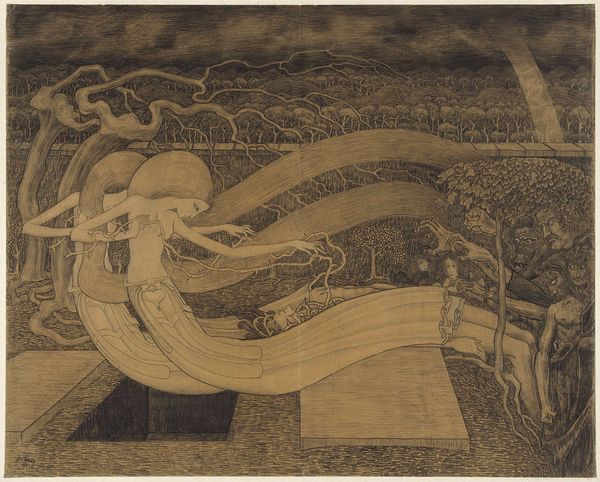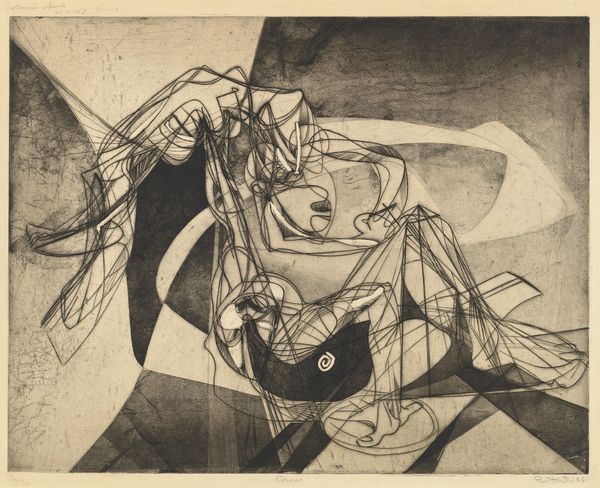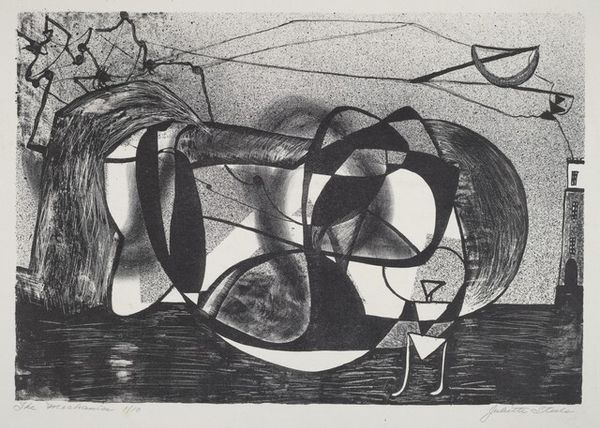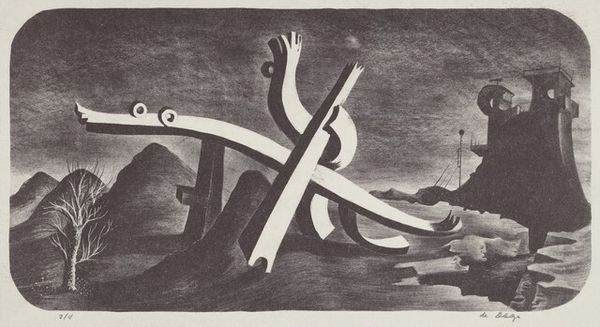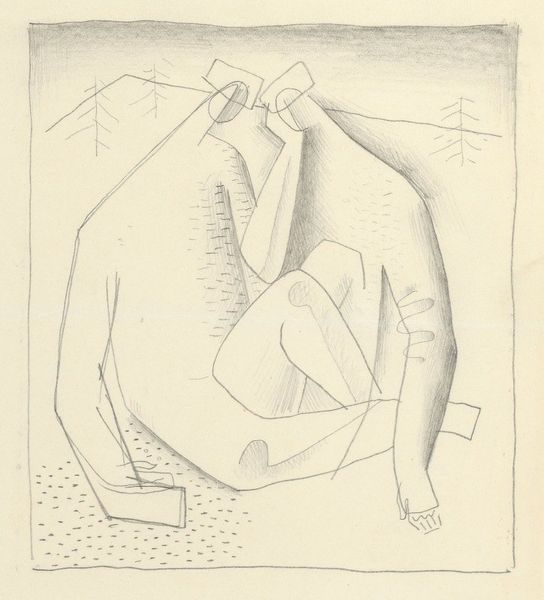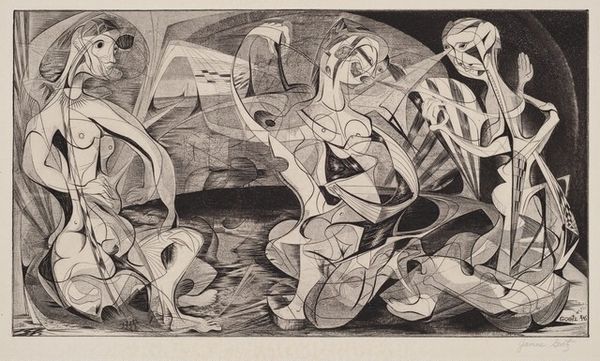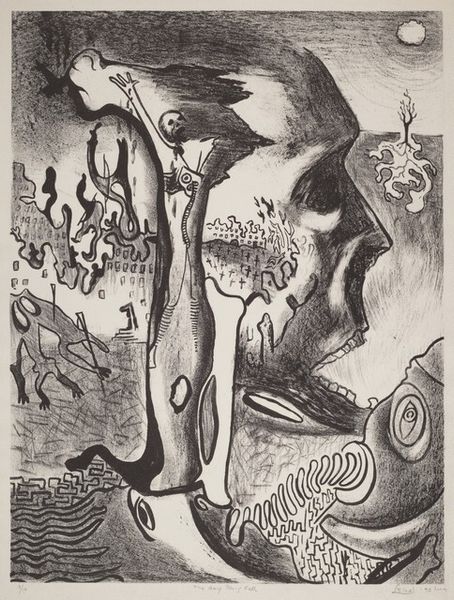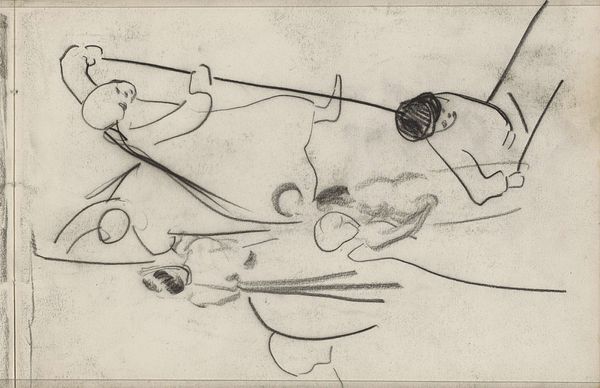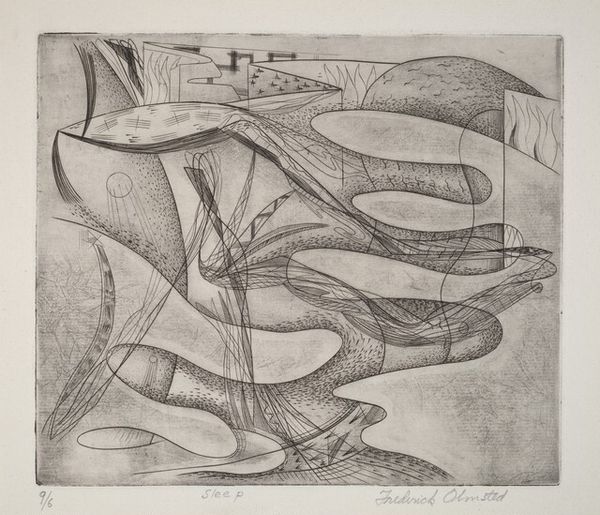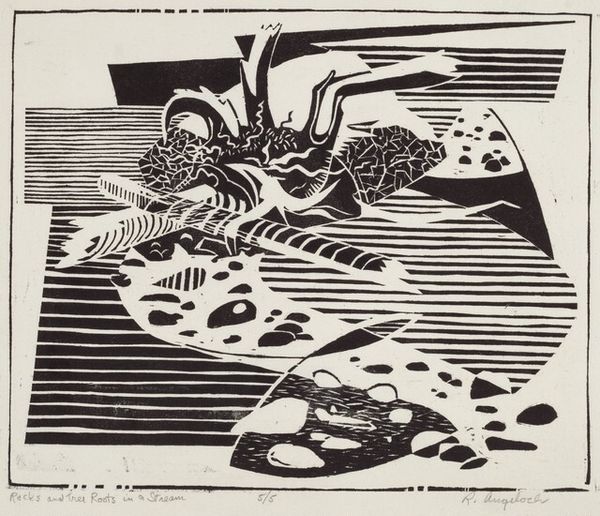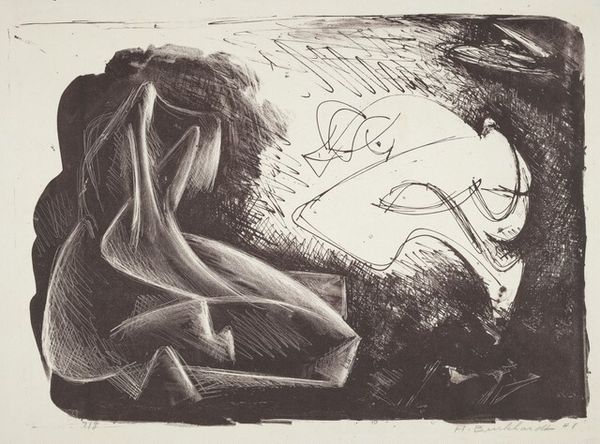
print, etching, engraving
# print
#
etching
#
figuration
#
abstraction
#
line
#
nude
#
engraving
#
modernism
Dimensions: plate: 20.3 x 31.4 cm (8 x 12 3/8 in.) sheet: 30.5 x 41.6 cm (12 x 16 3/8 in.)
Copyright: National Gallery of Art: CC0 1.0
Editor: Here we have Stanley William Hayter’s etching and engraving entitled *Nu*, created in 1933. The neutral palette gives it a somewhat antique feeling, even a surreal dreamscape quality with these abstract bodily forms. What catches your eye most about this piece? Curator: Ah, *Nu*, what a marvel! It's like diving into Hayter’s subconscious. To me, the tangled lines are almost a metaphor for the complex web of emotions we all carry within us. The overlapping figures feel both intimate and slightly unsettling. Doesn't it almost feel like Hayter is using abstraction to explore the raw vulnerability of being human? And those engraved lines—almost frantic, aren’t they? As if he’s trying to capture something fleeting. Do you get that sense? Editor: Absolutely! I hadn't thought of it that way, but the frenzy in the lines really does contribute to that sense of unease, and urgency, perhaps? It makes me wonder what he was going through personally when he created it. Curator: Well, 1933 was a tumultuous time globally. Perhaps that anxiety bled into his work. The beauty of abstraction is it allows for so many layers of interpretation, a real playground of meaning, eh? It’s like gazing at clouds – everyone sees something different, drawn from their own experiences. Editor: I’m now seeing a greater depth than I did initially. It’s incredible how much an artist can convey without relying on realism. Curator: Exactly! Art isn't always about showing what's *there*, but revealing what's *felt*. *Nu* invites us to feel alongside Hayter. And that, my friend, is powerful stuff.
Comments
No comments
Be the first to comment and join the conversation on the ultimate creative platform.
